May 10, 2024
Today we visited the city of Cologne, Germany, most well-known for its beautiful location along the Rheine River and its connection to the events of WWII.

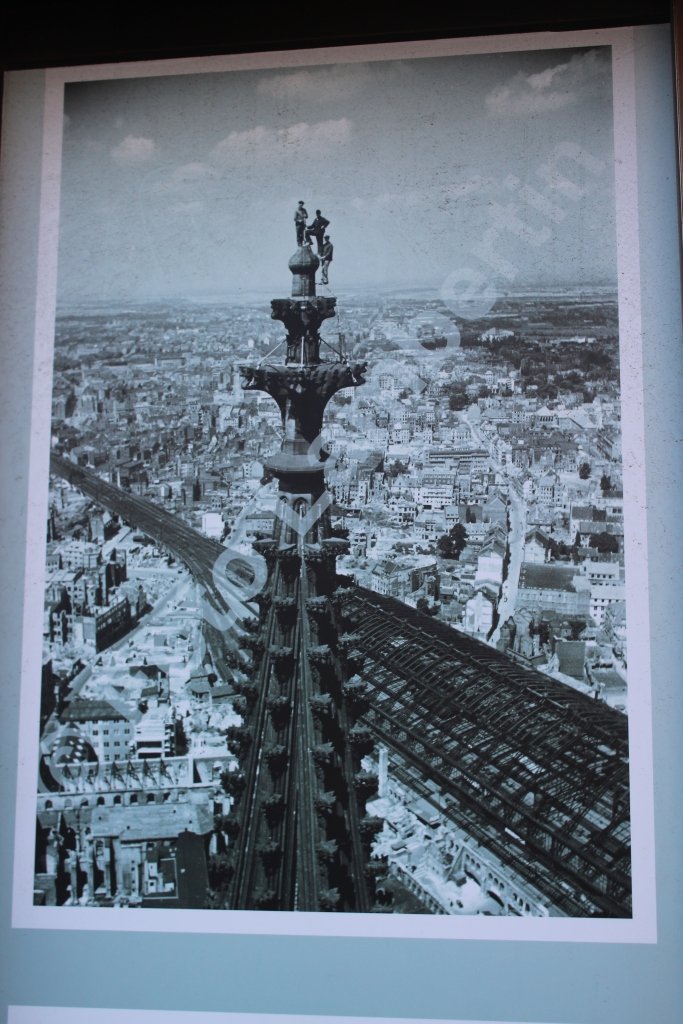
Prior to WWII Cologne was the fourth largest city in Germany and the largest along the Rheine with a population of approximately 800,000 people. As a highly industrialized city with a number of factories involved in the production of war supplies and a railway system heavily depended upon to transport war supplies and troops, Cologne was an important military target. By the time the bombing ended on March 2, 1945, Cologne had been the site of 262 separate allied bombings. Fewer than 20,000 people remained in the city and only two buildings remained standing – a beer hall (of course!) and the Cologne Cathedral.
Construction of the church began in 1248. During this medieval period the church was flush with money raised from charging people money for forgiveness of their sins and entry into Heaven. The Church offered their parishioners “Indulgence Letters.” Individuals would confess their “indulgence” (aka “sin”), pay an appropriate fee as determined by the Church, and receive a letter absolving them of their indulgence. Not to worry if they found themselves laying on their death bed having not yet confessed their indulgences. For a “small” fee they could still gain entrance to Heaven. This worked very well for the Church until 1450. Anyone know what happened then? Johannes Gutenberg invented the printing press, which led to copies of the Bible being made available to the general public and not just the religious leaders.
When people began reading the Bible for themselves, they discovered they’d been duped! There were no mentions of Indulgence Letters, nor of the need to pay a fee for forgiveness or entry to Heaven. They stopped participating in the charade and by 1473 the Church’s wealth had dwindled to the point they could no longer fund the building of the church. Building would not resume until the 19th Century, when the Protestants made it their mission to complete the church. They successfully did so in 1880, remaining true to the original design conceived way back in the 13th Century.
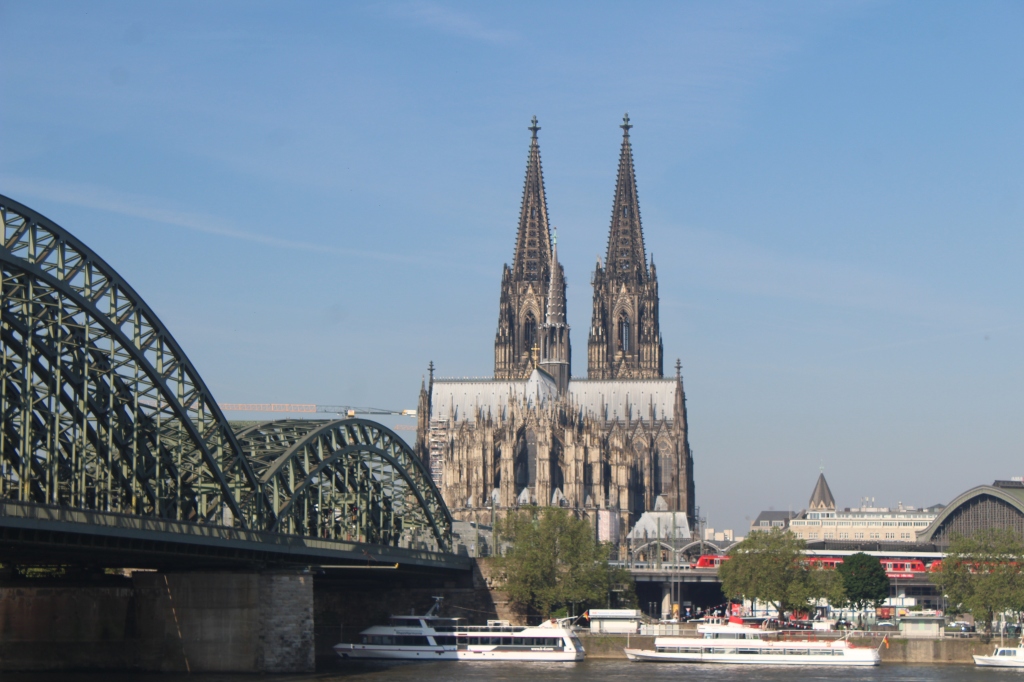
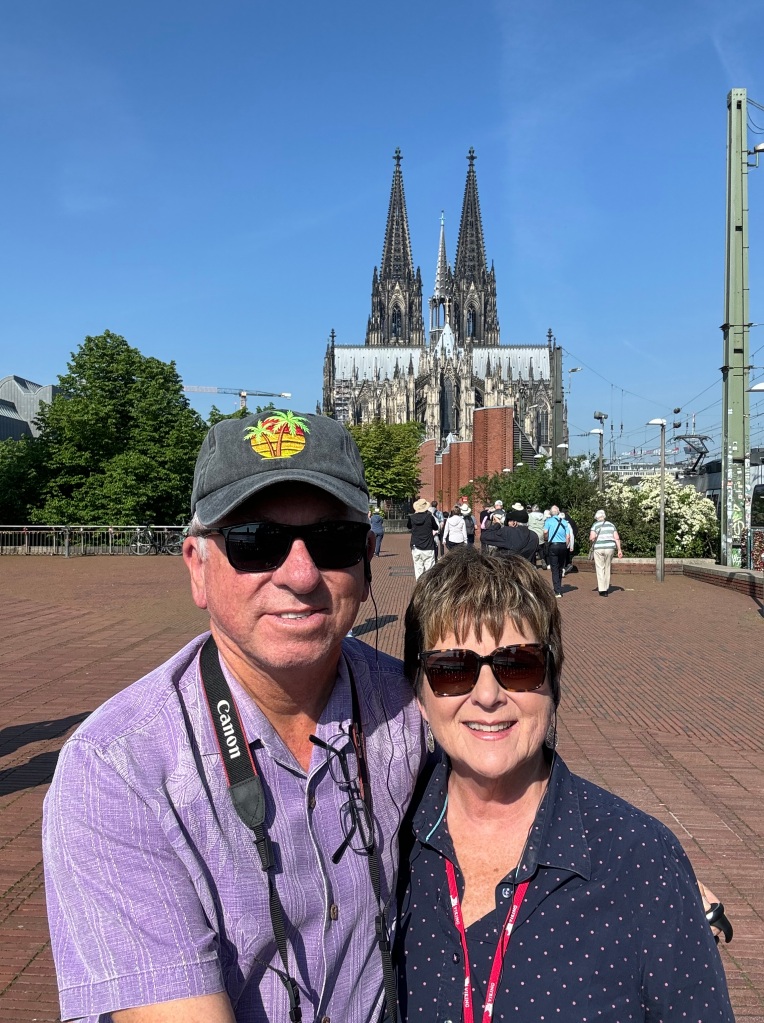
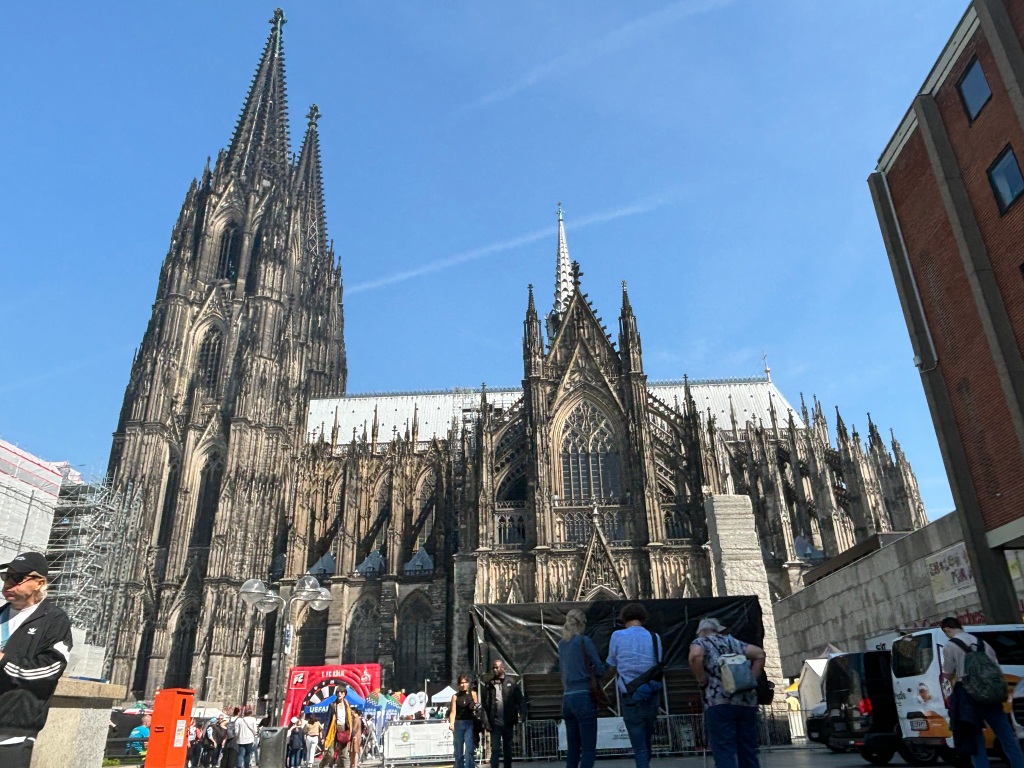
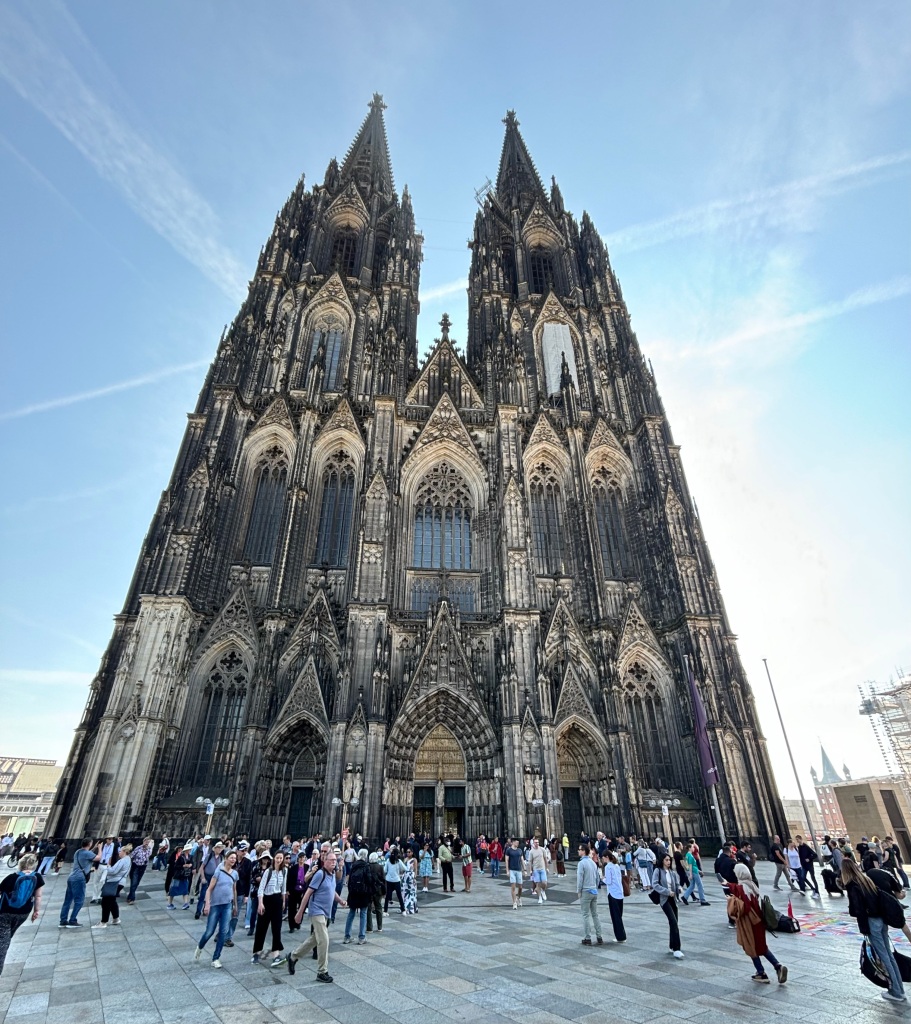

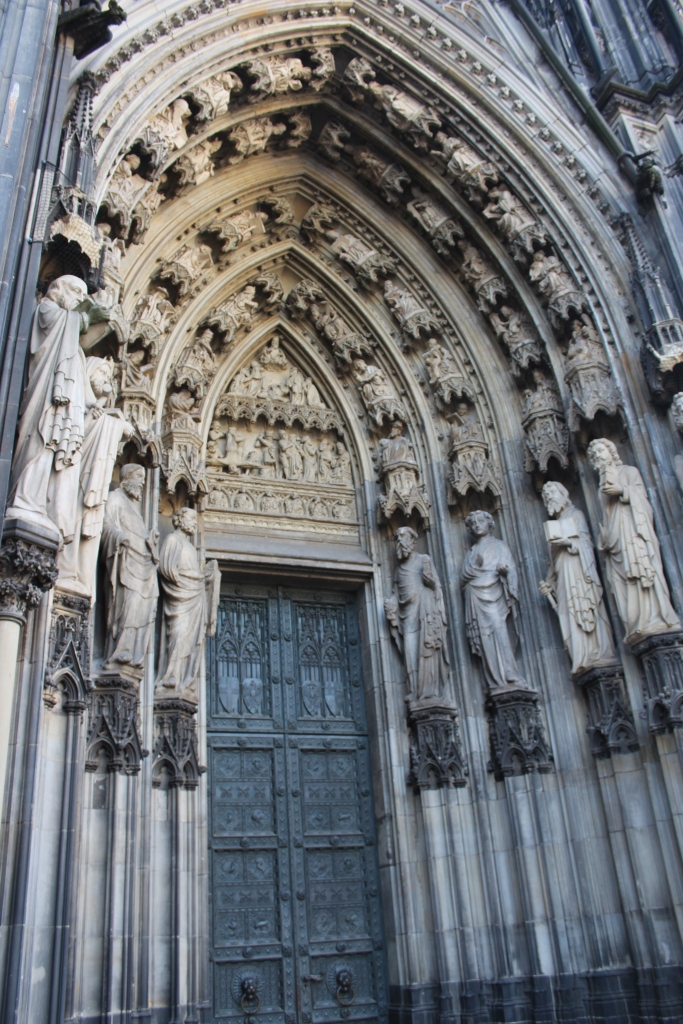
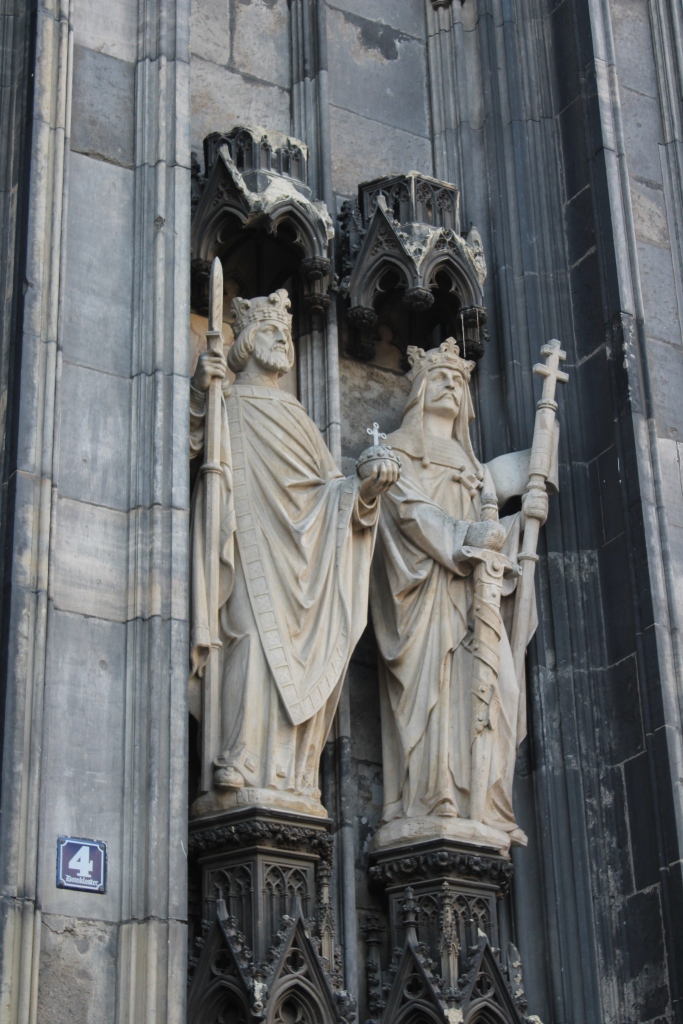

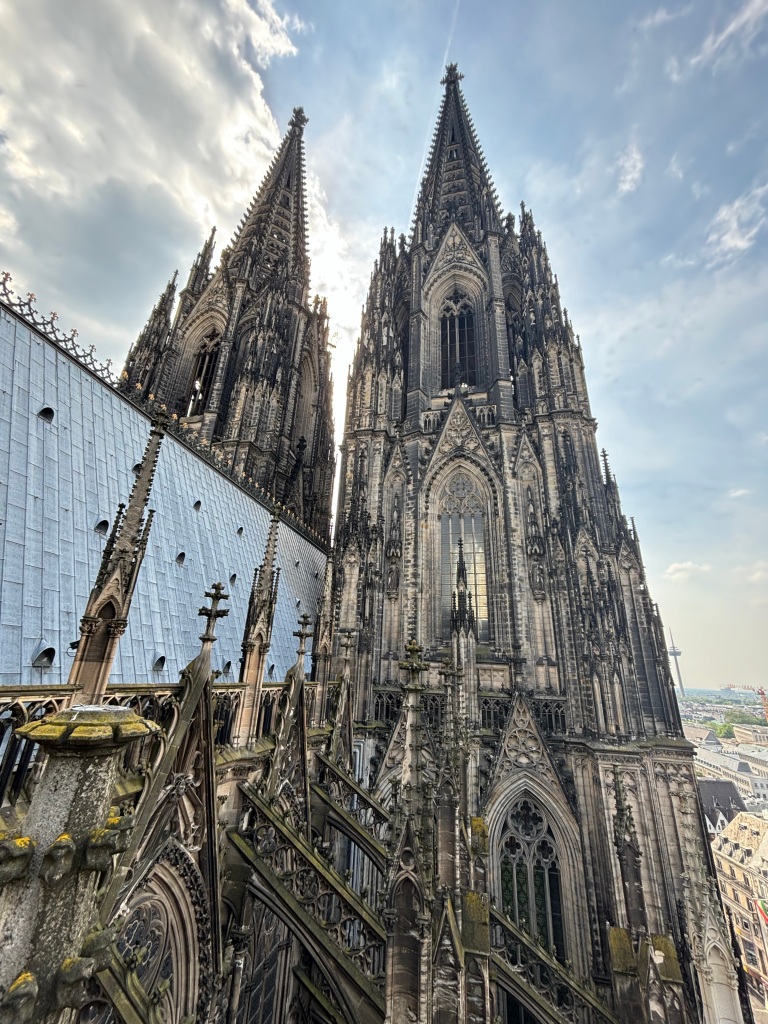
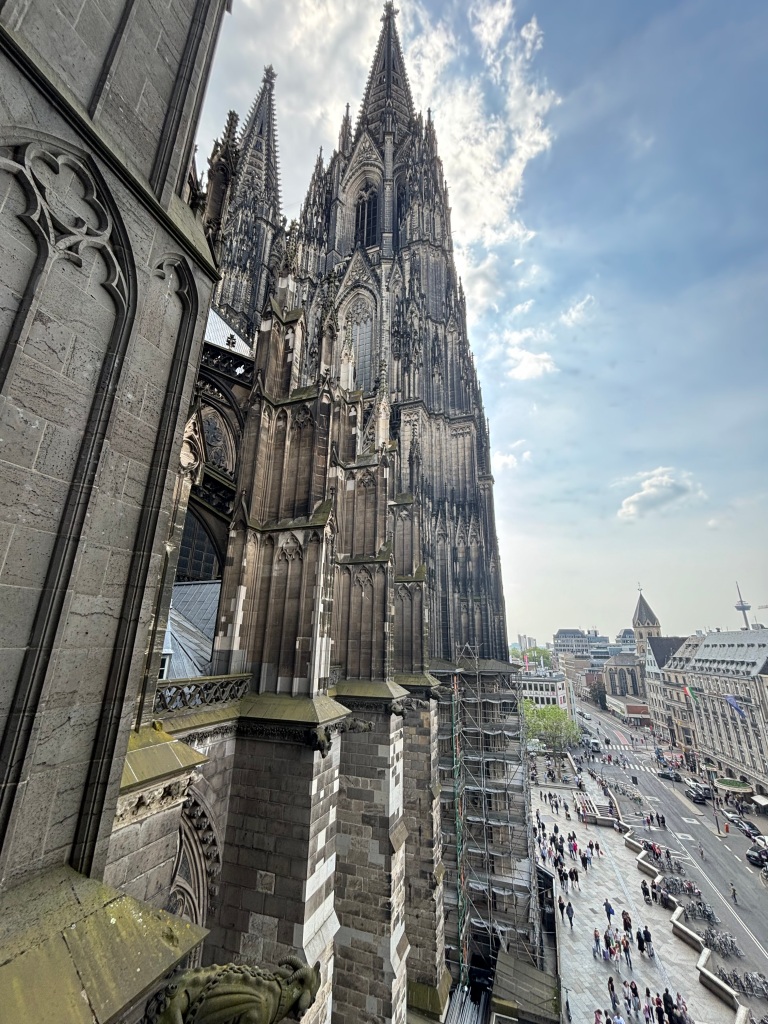
It was the church’s twin spires that saved the church during the war. They served as easily recognizable landmarks for allied bombers to help them with their bearings when going deeper into Germany to drop their bombs. Even after the allied forces had gained control of the skies and no longer needed the landmark, they did not bomb the church, perhaps out of religious respect, perhaps out of respect for its cultural significance. Even though the church was never purposely targeted, it still suffered 14 hits. One of the reasons these bombs did not destroy the church is because all of its many stained-glass windows (a majority of which were donated by King Ludwig I – father of “crazy” King Ludwig II) had been removed. As a result, when a bomb did roll in, the pressure of the bomb blasts escaped out the open windows instead of being absorbed by the walls of the building.

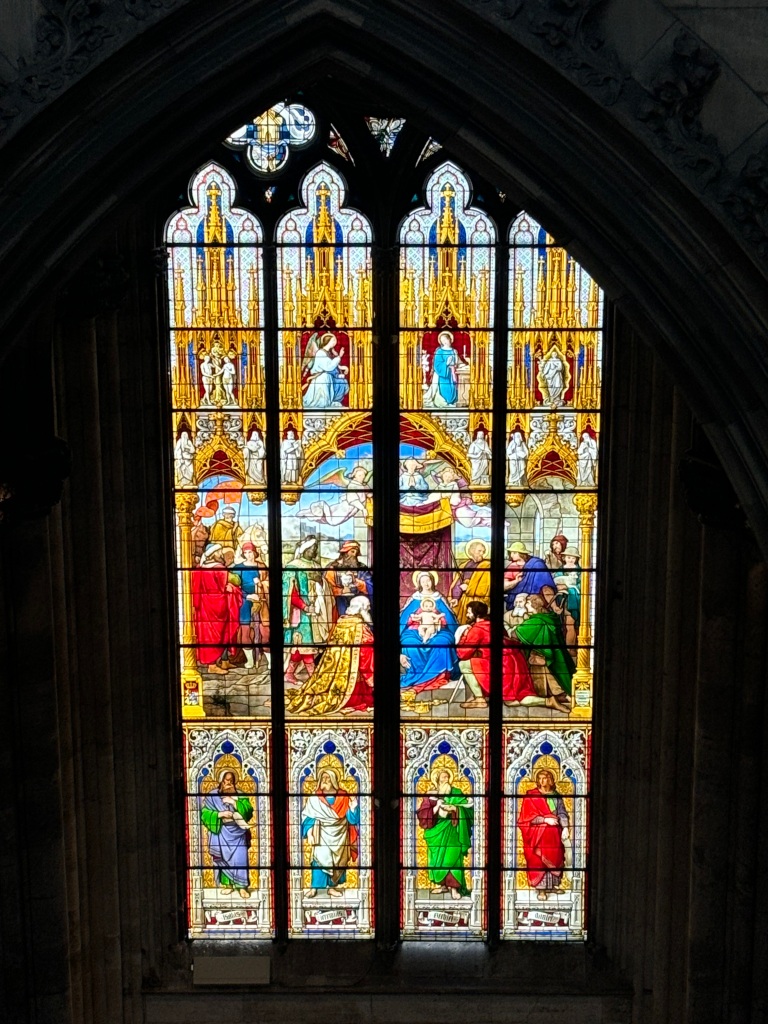
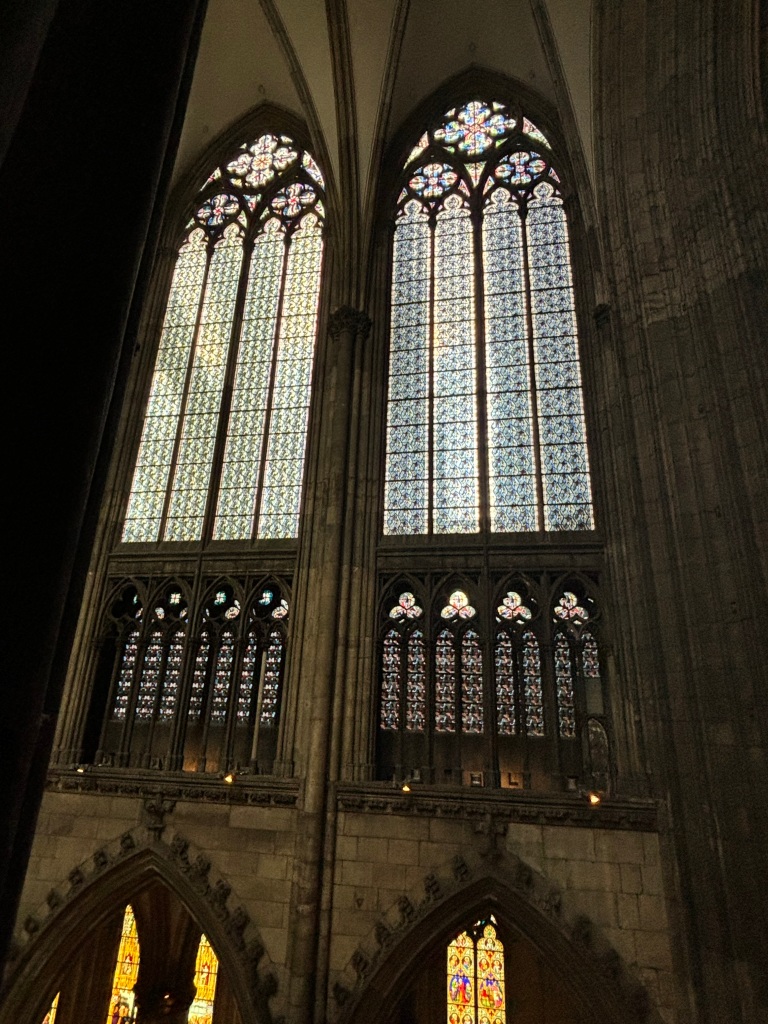

There are two organs in the church, one of which weighs 30 tons and hangs high above the ground. The only thing that keeps it from crushing the folks below are the heavy cables from which it is suspended. It is safe enough for organists to sit at the organ itself and play, but most prefer to keep their feet firmly planted on the ground. Either of the church’s organs can be played sitting at the keyboard with the light-colored wood, pictured in the last photograph below.

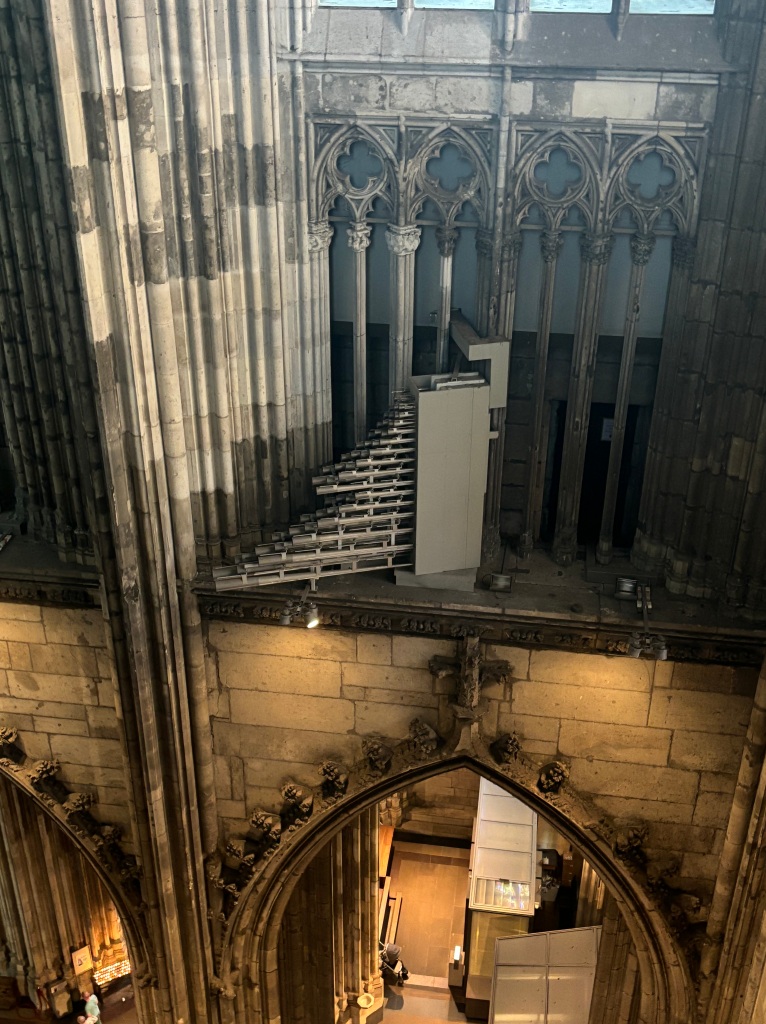
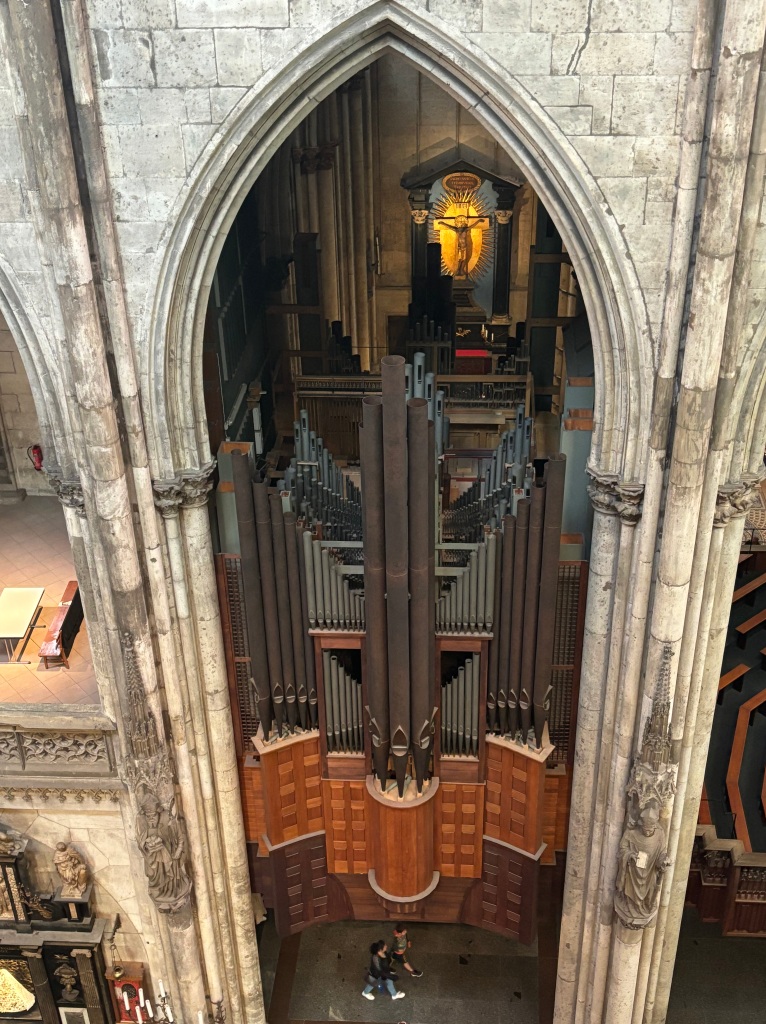
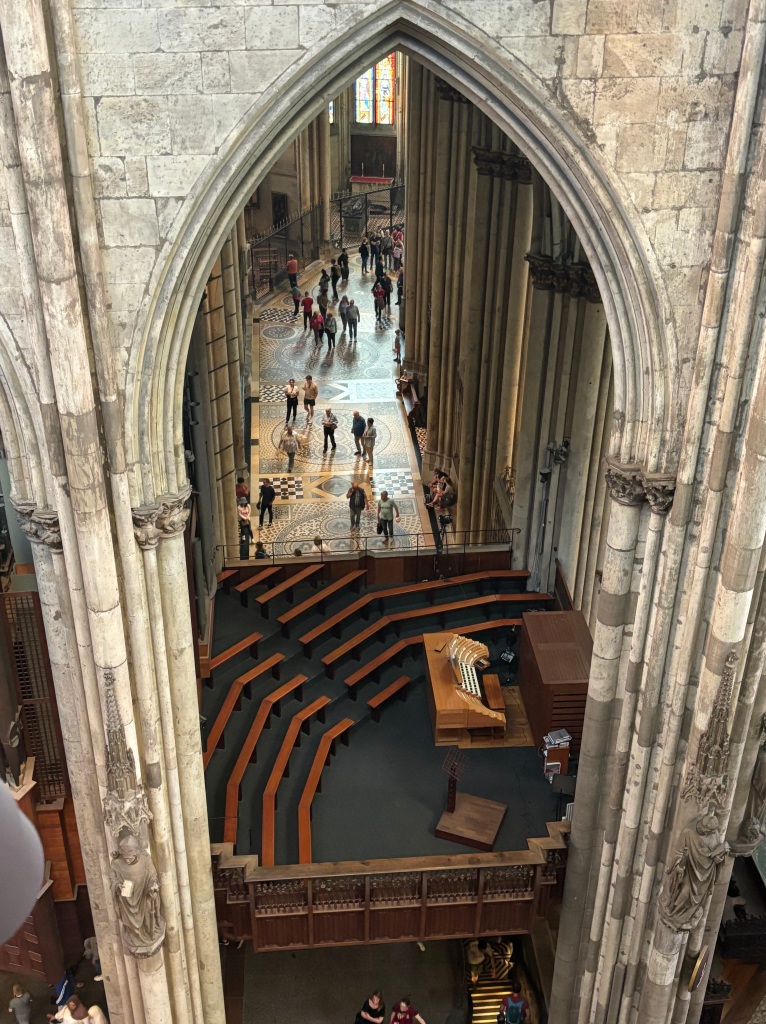
One of the most unique things about the church is that it is said to hold the remains of the Three Wise Men. The remains were originally preserved in Milan, but in 1162 Emperor Frederic I (aka Barbarossa) invaded Milan. With him was the Archbishop of Cologne who asked if he could have the remains to take back to Cologne. Barbarossa said yes and in 1167 a golden shrine was commissioned to hold the remains. It continues to be on display in the Cathedral, now encased in glass. Once a year, on the Day of Epiphany the Shrine of the Three Kings is open to the public. Thousands of people flock to the city to pay homage.
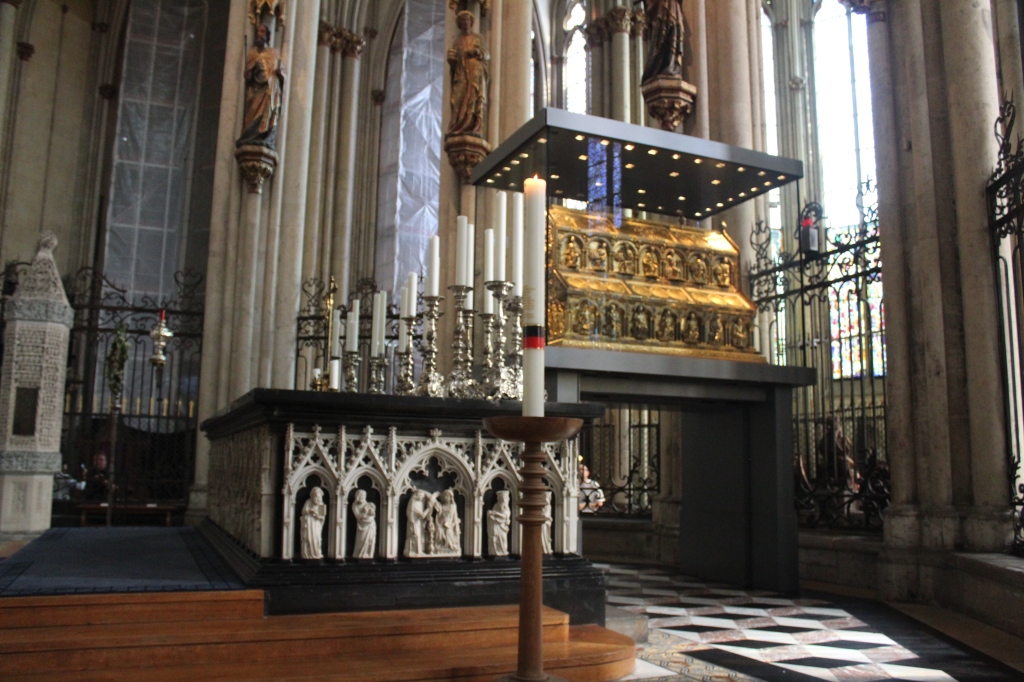

The church contains more than 1500 statues of various sizes. Since the 19th century, artisans have been making models of the statues to ensure accurate reproductions when the statues require replacement. Because of the intricacies of the designs the statues still need to be hand-carved; even the most sophisticated stone carving machines cannot achieve what can be done by hand. It takes the artisans at least three years to create new statues.
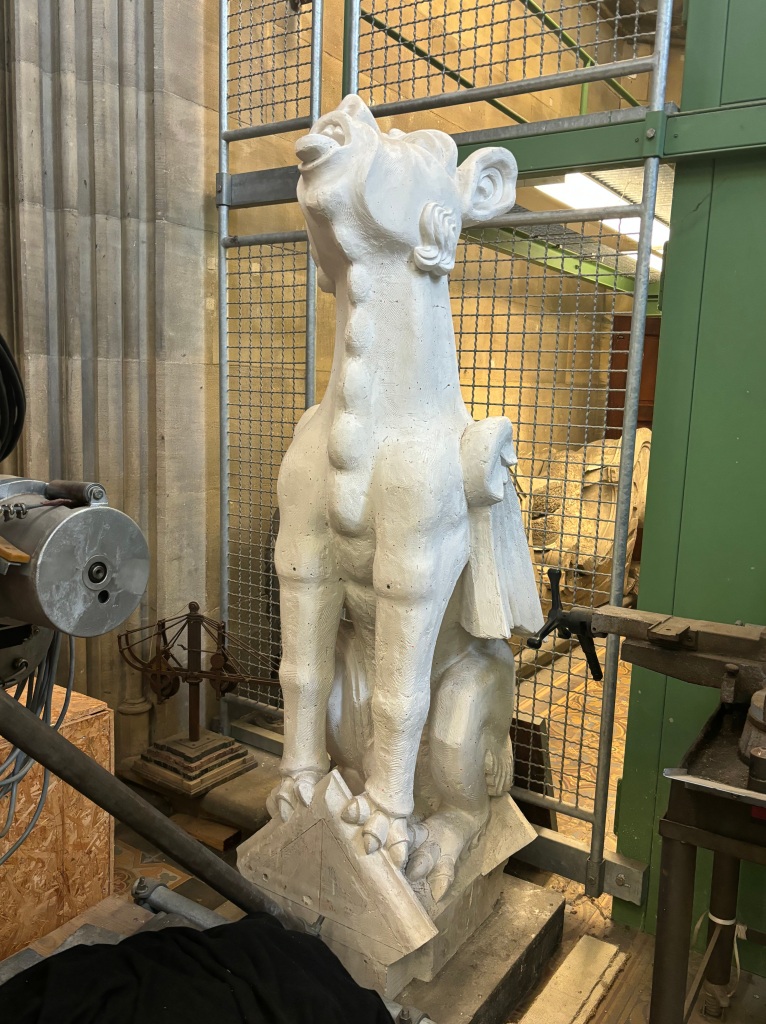
Ironically, when the church was originally designed in the 13th century, few of its features at ever been created before and no one knew how to deliver on the extravagant vision of the architect. But this was to be a gift to God, and with God all things are possible. The height of the spires and the aesthetics of the knave were intended to give one the sense of ascending to Heaven; the knave represents the beauty of Heaven that awaits those who follow the straight and narrow path.
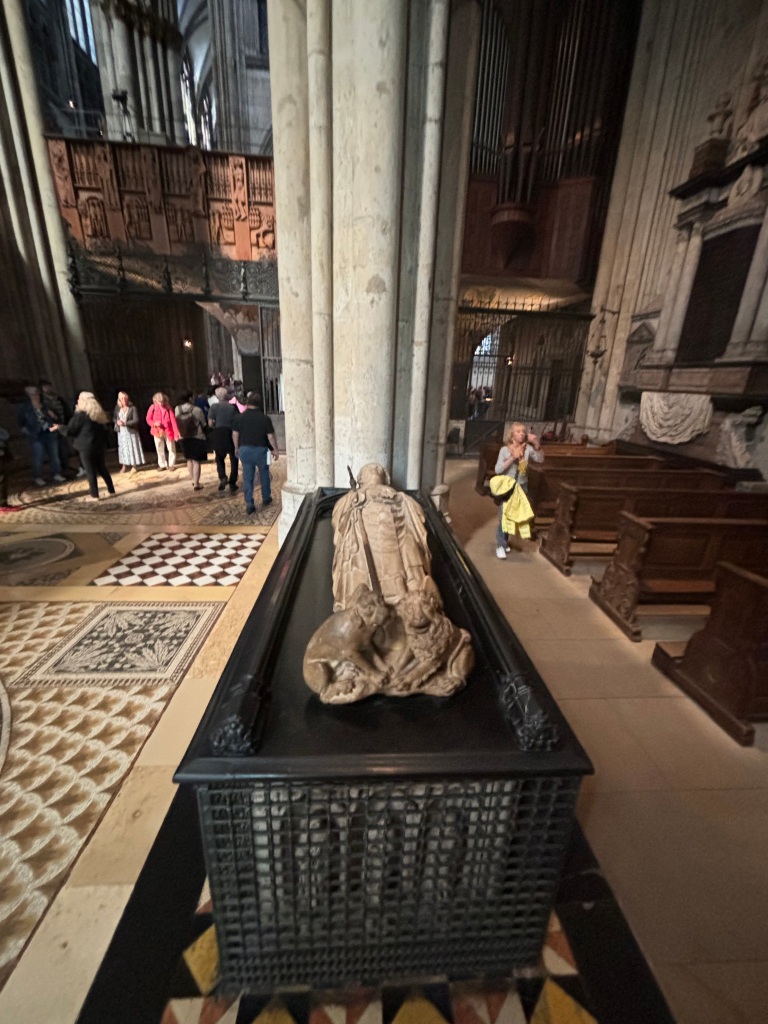
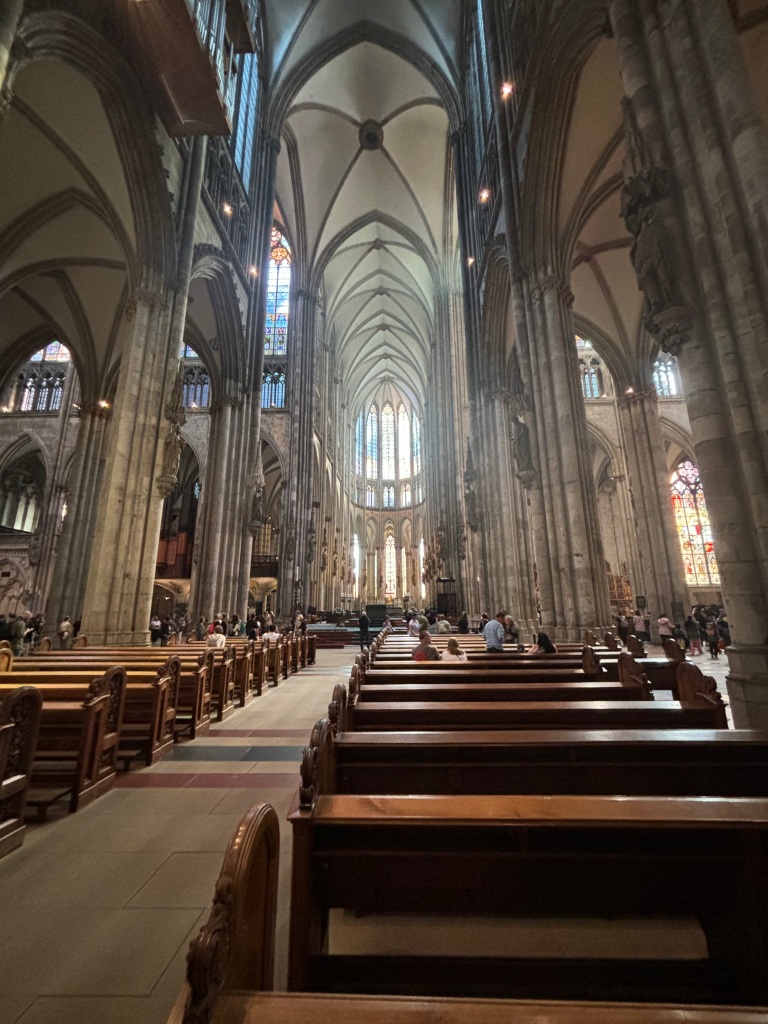

Each generation of builders knew that they would not be able to see the completion of the project; their goal was to solve the problem of how to build that portion for which they were responsible. Let future generations figure out the rest.
Later in the afternoon we were treated to a roof-top tour of the Cathedral. We were taken 88′ up in an exterior elevator and walked through the interior walls, where we could see the inner workings of the building – an engineer’s dream experience!

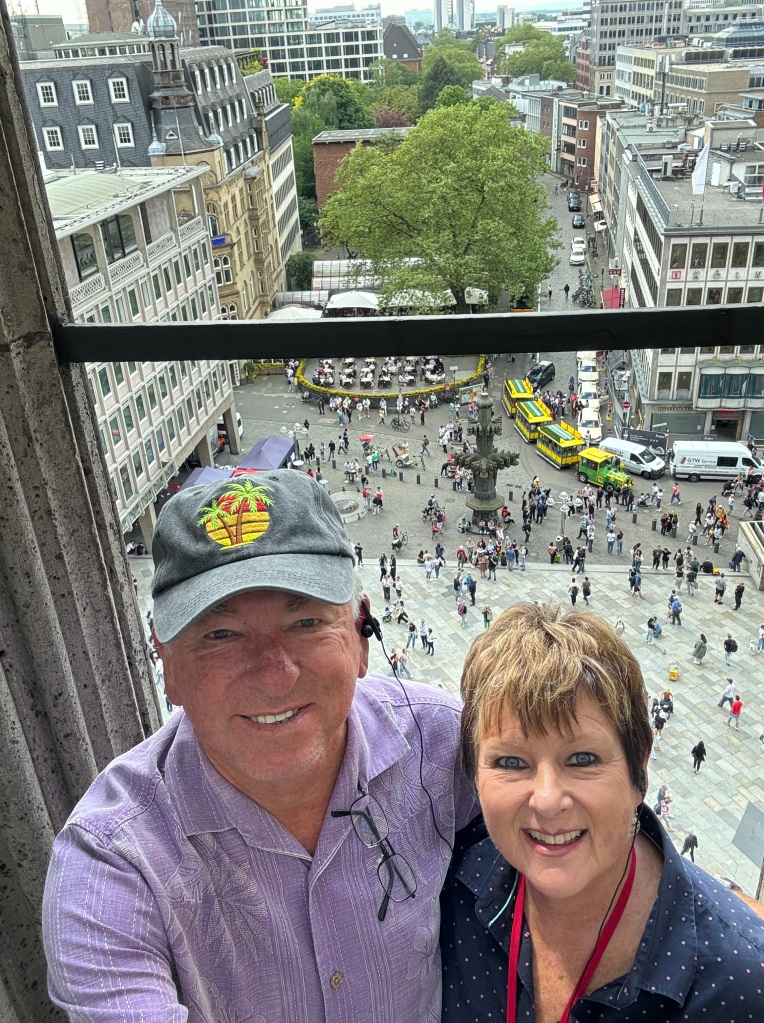

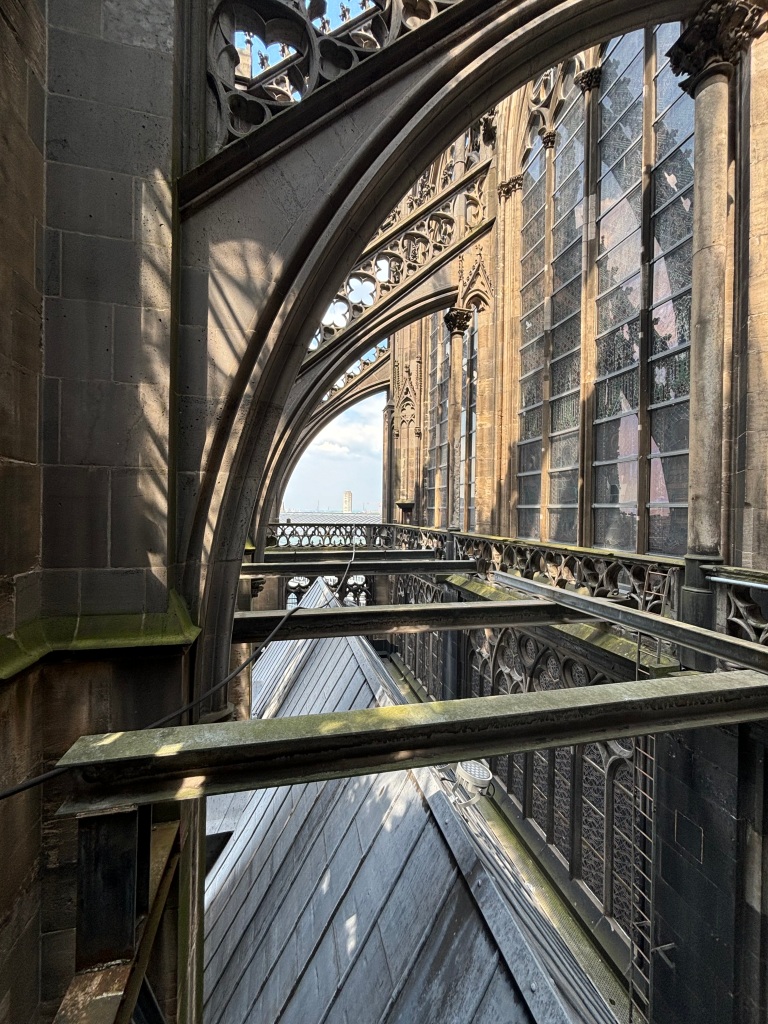
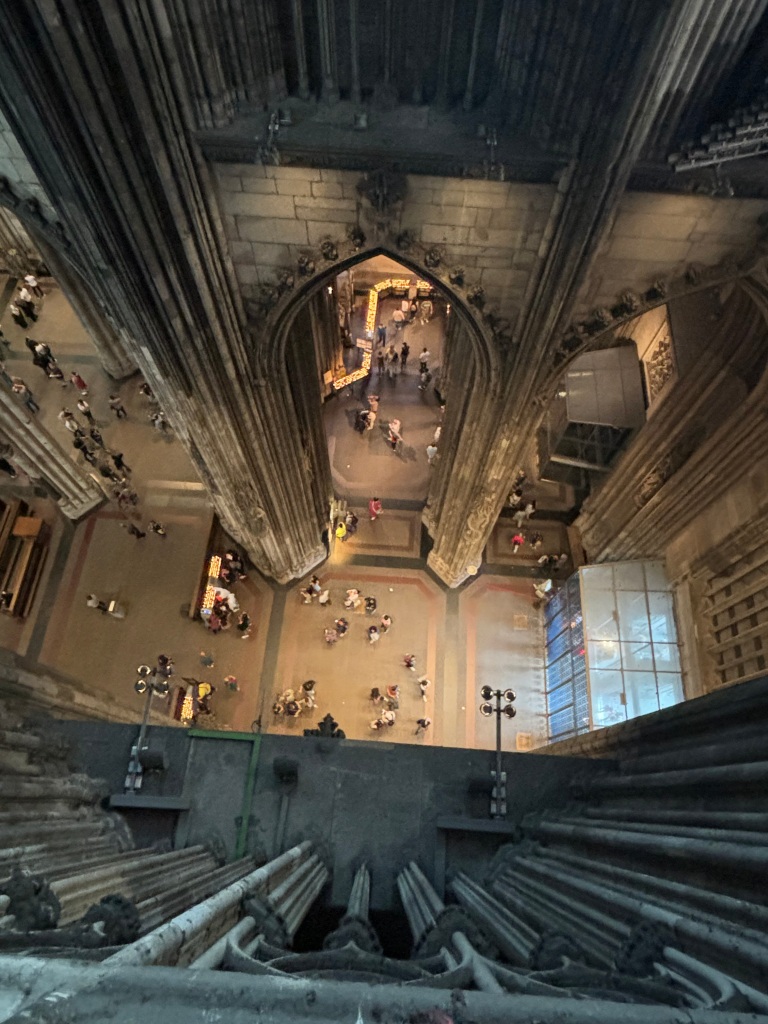


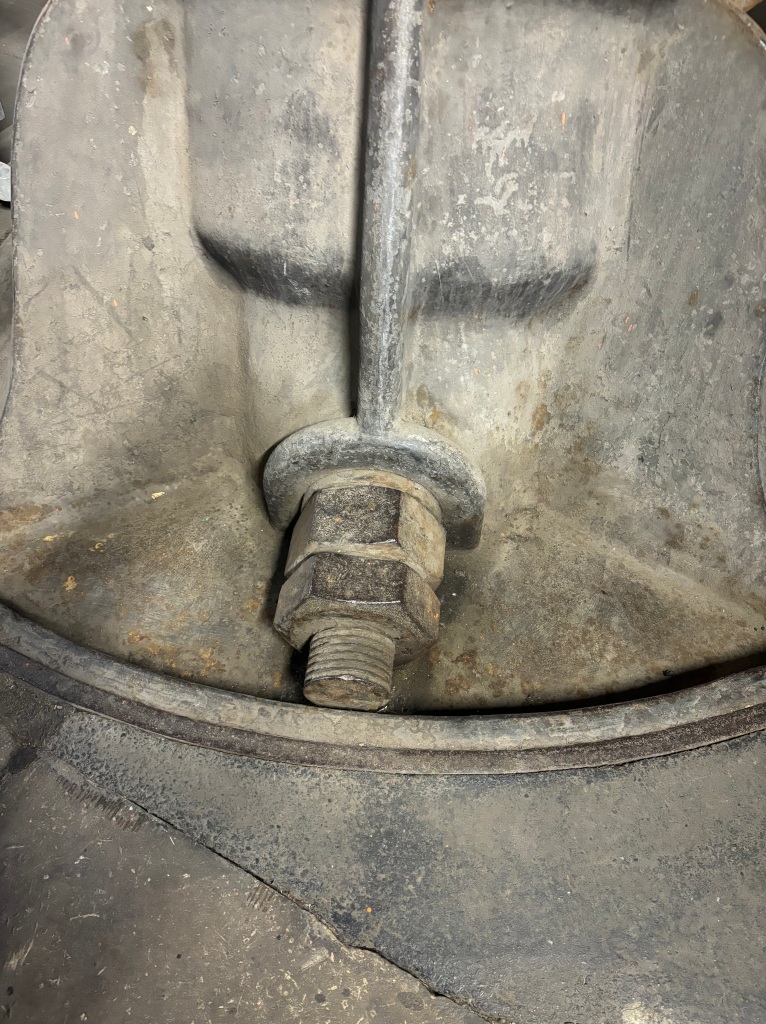
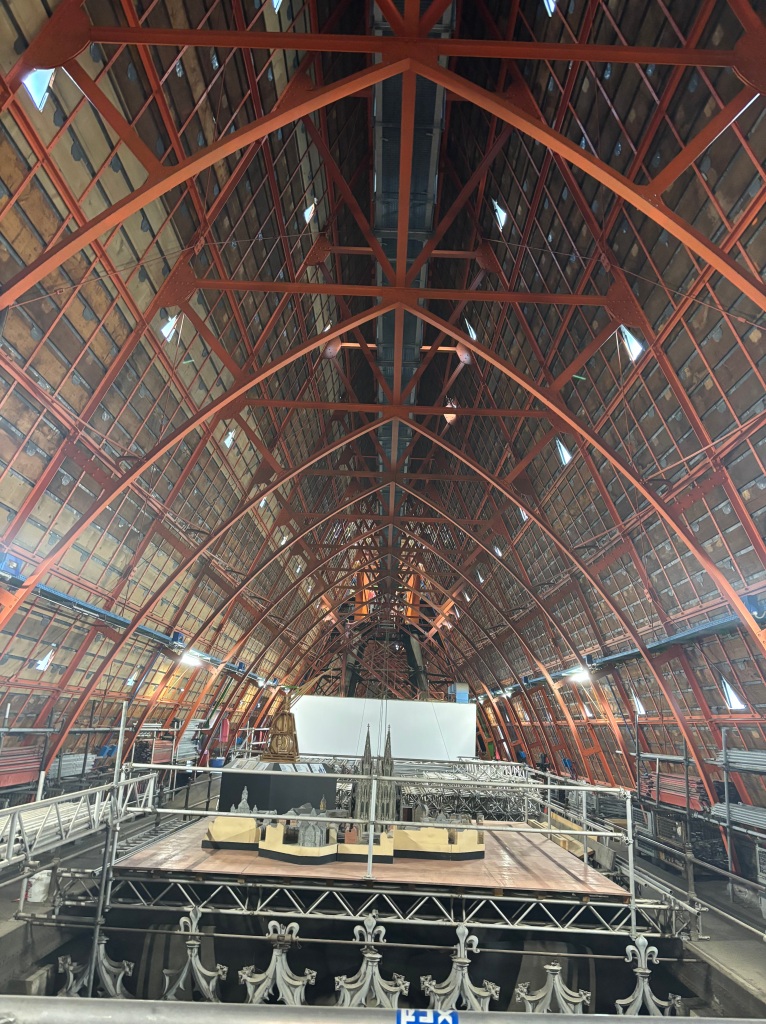
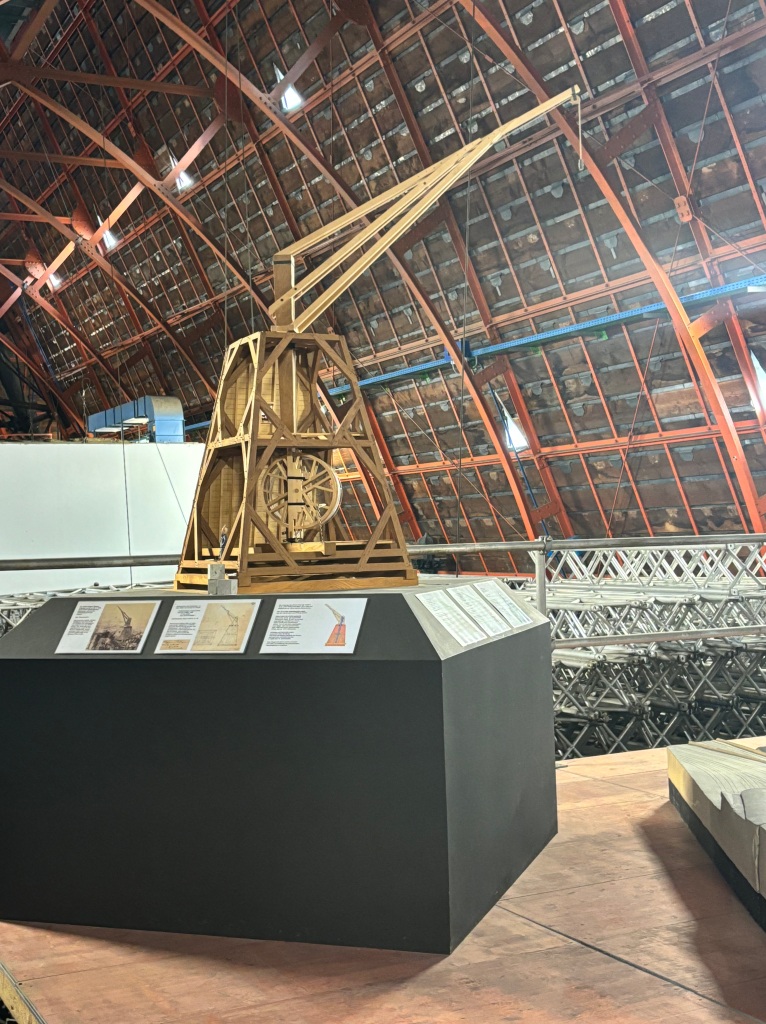
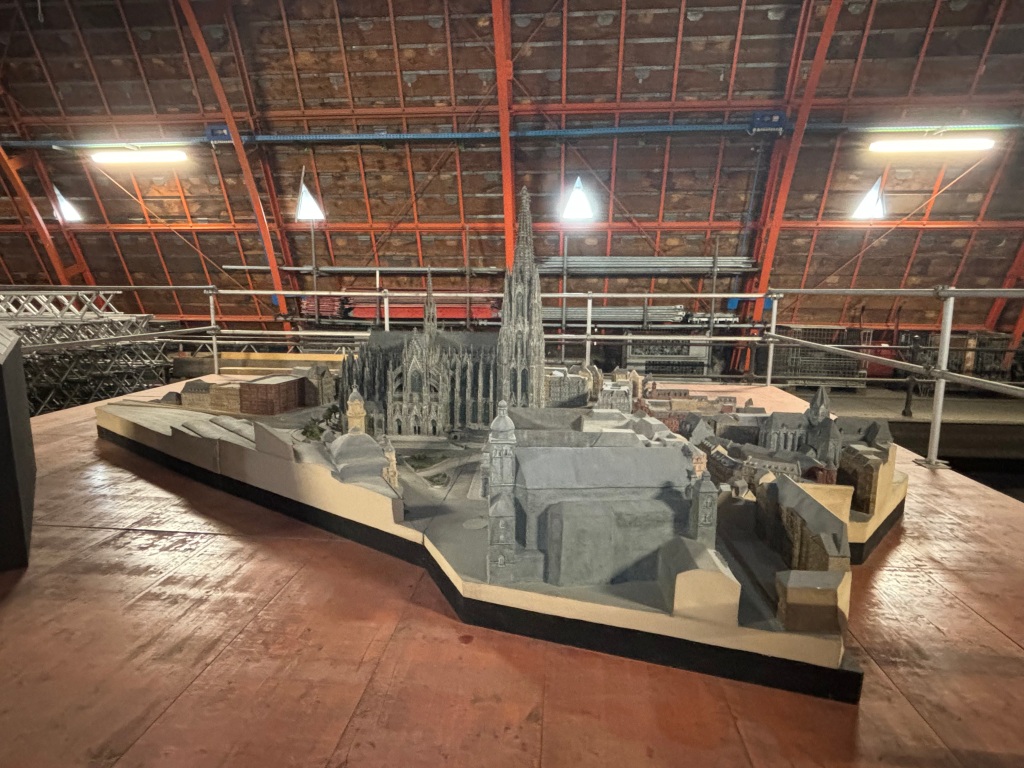

When building resumed in the 19t century newspapers reported on a 14th century crane found on site. You can see a replica of it above. It dated back to the 14th century and wasn’t removed until 38 years before the church was completed. Pam didn’t even know they had cranes in the 14th century! This one had a 1.5-ton capacity and was operated by man-power. Two men would stand inside the bottom wheel of the crane and run like hamsters to power the machinery. The large eagle to the right in the photos below is the same on you see perched on the end of the crane.
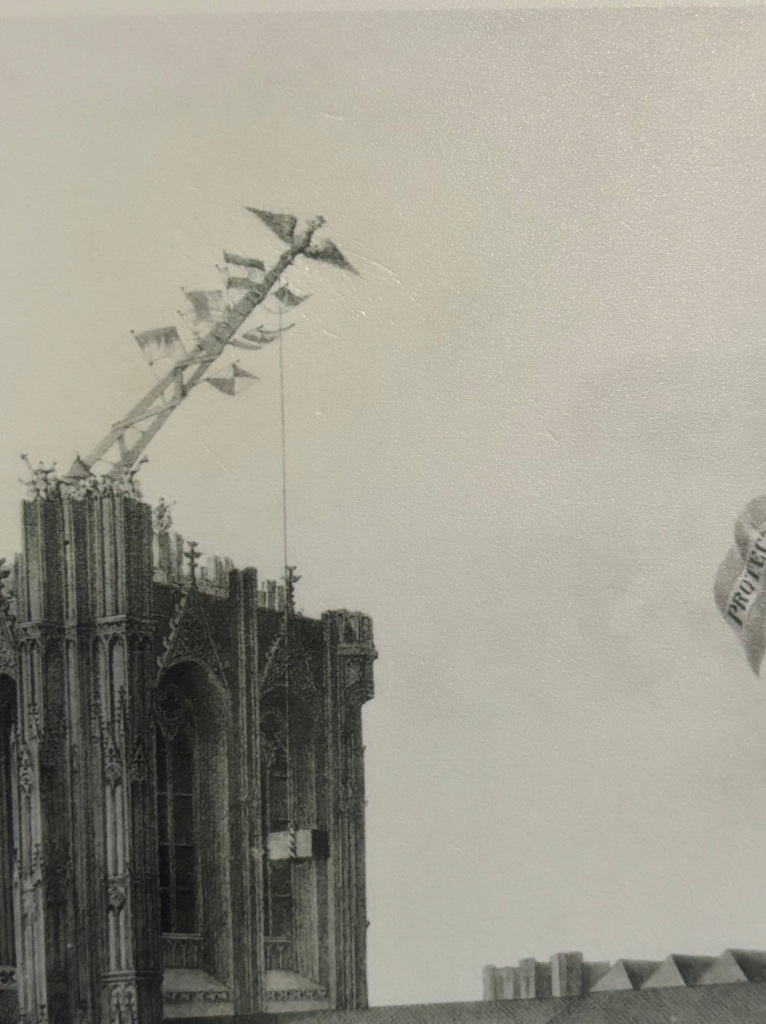

Our tour continued up a spiral staircase to the peak of one of the towers where Ken got some great photos.
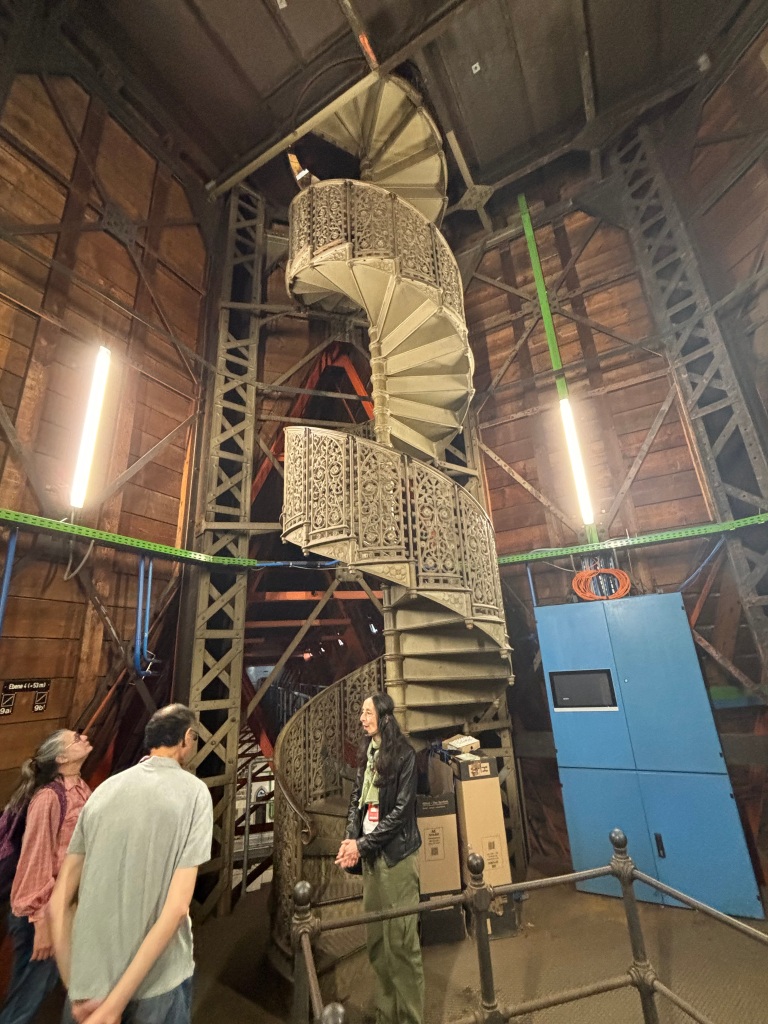
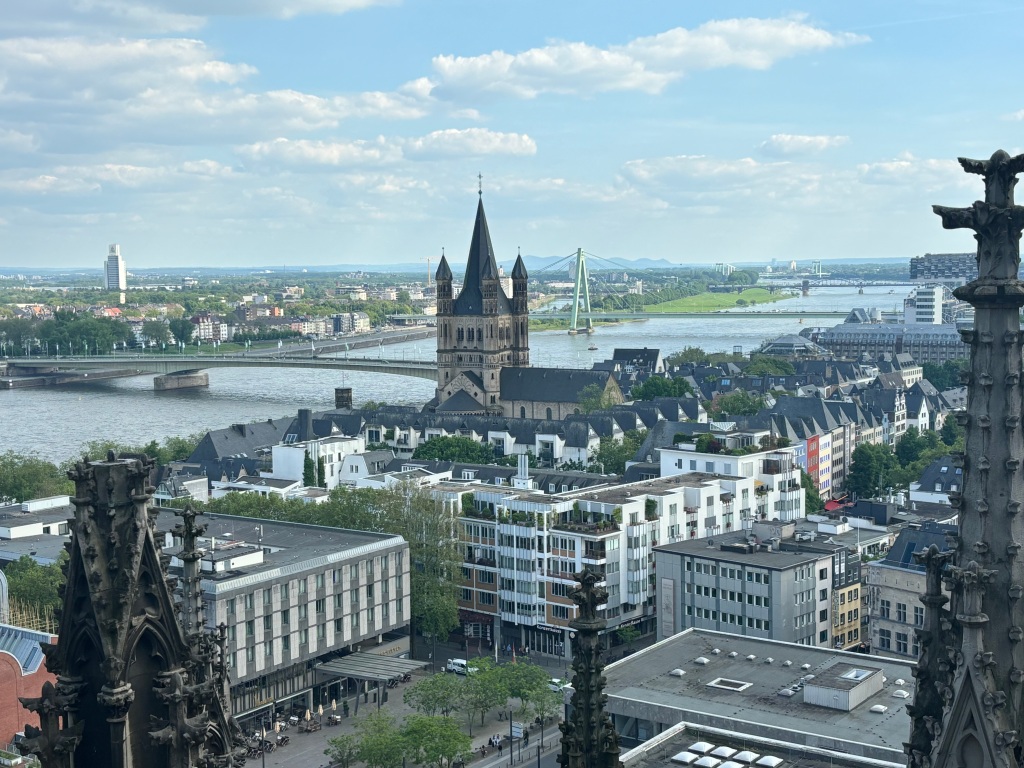
The Cathedral has 135,00 square feet of lead roof and 107,000 square feet of stained glass supported by buttress piers, or arches, that keep the walls from collapsing inward from the weight of the glass. The foundation goes 57 feet into the ground. The metal trusts throughout the building were built in 1860. When it was completed, the Cathedral was the tallest, biggest, steepest structure ever built. It would be 30 years before this feat would be surpassed by the Eiffel Tower – and even then it is only in height that the Eiffel Tower outshines the Cathedral.
Today the exterior of the building is badly in need of cleaning. Most of the damage is attributed to the Sulphur that used to hang in the air, the coal-fired trains that used to run right next to it, and the residue from the bombs dropped during the war. Unfortunately, you can’t just power-wash the dirt away; that would destroy the stone altogether. Instead, more than 100 artisans, including 60 of the world’s top stone masons, work daily to replicate and replace each piece of the original stone. It is not known how long this will take, but like those who came before these masons know it will not be complete in their lifetime.
Some other fun things we learned while in Cologne…
The bridge that connects the two sides of the Rheine River at Cologne is guarded by statues of Prussian soldiers. You’ll notice that the soldiers are facing in a direction leading out of the city. The statues were building during the Prussian occupation of Germany and were a hint to Prussia that Germany would like them to leave.
The bridge has more than two million “love” padlocks (who counts them?). Couples engrave their names on the lock, secure it onto the bridge, throw the key into the river below, and toast to their everlasting love.

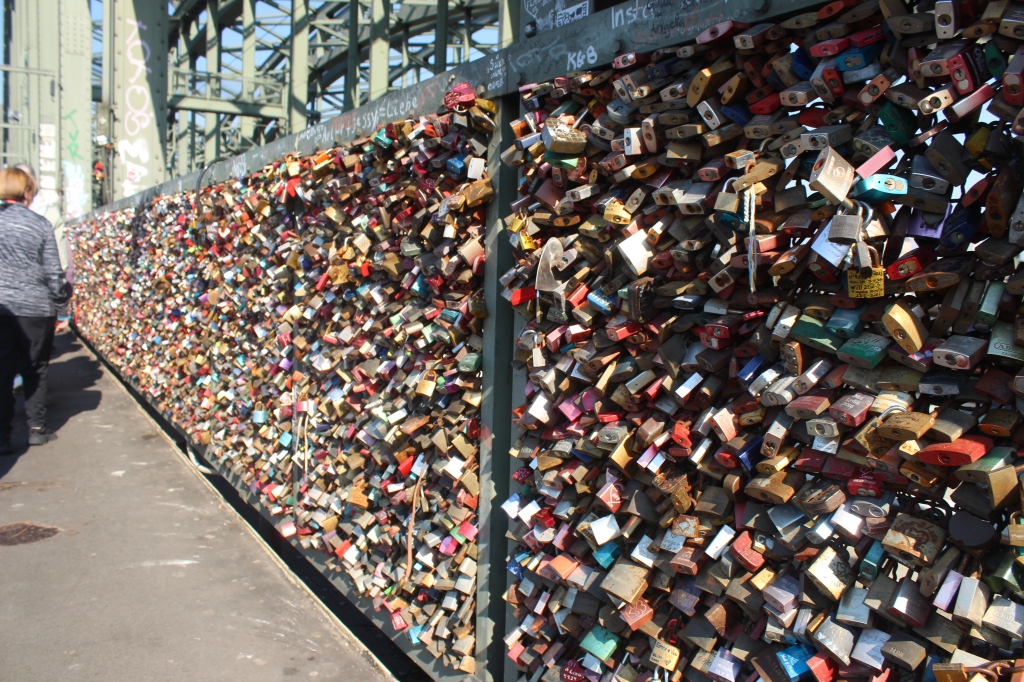

What a beautiful building! Great pictures, Ken!
LikeLike
So jealous of this stop—beautiful!
LikeLike